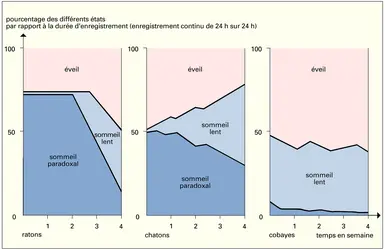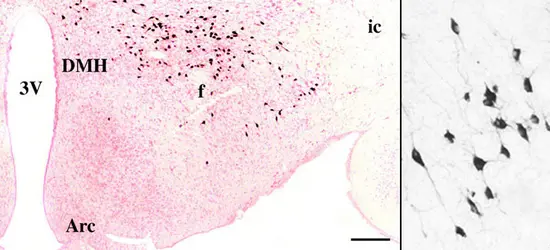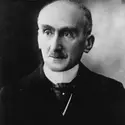SOMMEIL
Article modifié le
Bibliographie
Physiologie du sommeil
J. Beaumont, Physiologie des vertébrés, Dunod, Paris, 1995
O. Benoit dir., Physiologie du sommeil. Son exploration fonctionnelle, Masson, Paris, 1984
O. Benoit & J. Foret, Le Sommeil humain. Bases expérimentales physiologiques et physiopathologiques, ibid., 1995
M. Billiard dir., Le Sommeil normal et pathologique, ibid., 1994
A. A. Borbely & J. L. Valatx, Sleep Mechanisms. Exp. Brain Res., suppl. 8, Springer, Heidelberg, 1984
J. M. Gaillard, Le Sommeil, ses mécanismes et ses troubles, Doin, Paris, 1990
T. Gallopin, P. Fort, E. Eggermann, B. Cauli, P-H. Luppi, J. Rossier, E. Audinat, M. Mühlethaler, M. Serafin, « Identification of sleep-promoting neurons in vitro » in Nature, vol. 404, no 6781, p. 992, 2000
J. A. Hobson, E. F. Pace-Schott, « The cognitive neuroscience of sleep : neuronal systems, consciousness and learning », in Nature Review in Neurosciences, vol. 3, p. 679, 2002
S. Inoue & A. A. Borbely, Endogenous Sleep Substances and Sleep Regulation, V.N.U. Science Press, B.V., Utrecht, 1985
B. E. Jones, « The Neural Basis of consciousness across the sleep-waking cycle », in Advances in Neurology, vol. 77, p. 75, 1998
M. Jouvet, « The Role of monoamine and acetylcholine containing neurons in the regulation of the sleep waking cycle », in Ergebnisse der Physiologie, vol. LXIV, 1972 ; « Le Rêve », in La Recherche, vol. V, no 46, 1974 ; « Le Comportement onirique », in Pour la science, no spéc., nov. 1979 ; Le Sommeil et le rêve, Odile Jacob, Paris, 1992 ; Où, quand, comment. Pourquoi rêvons-nous, pourquoi dormons-nous ?, ibid., 2000
P-H. Luppi, C. Peyron, C. Rampon, D. Gervasoni, B. Barbagli, R. Boissard, P. Fort, « Inhibitory Mechanisms in the raphé dorsalis and locus coeruleus during sleep », in Handbook of Behavioral State Control : Cellular and Molecular Mechanisms, pp. 195-211, CRC Press, 1999
A. Mayes, Sleep Mechanisms and Functions, Van Nostrand Reinhold, G.-B., 1983
A. Mayes dir., Sleep Mechanism Function in Humans an Animals : An Evolutionary Perspective, Van Nostrand Reinhold, Berkshire, 1983
G. Moruzzi, « The Sleep Waking Cycle », in Ergebnisse der Physiologie, vol. LXIV, 1972
C. Peyron, Y. Charnay, « Hypocrétins/oréxines et narcolepsie : de la molécule à la pathologie », in Revue neurologique, vol. 159, p. 6S35, 2003
C. B. Saper, T. C. Chou, T. E. Scammell, « The sleep switch : hypothalamic control of sleep and wakefulness », in Trends in Neurosciences, vol. 24, no 12, p. 726, 2001
S. Schwartz, P. Maquet, « Sleep imaging and the neuro-psychological assessment of dreams », in Trends in Cognitive Science, vol. 6, no 1, p. 23, 2002
J. E. Sherin, P. J. Shiromani, R. W. McCarley, C. B. Saper, « Activation of ventrolateral preoptic neurons during sleep », in Science, vol. 271, no 5246, p. 216, 1996
J. L. Valatx, « Régulation du cycle veille-sommeil », in Benoît-Forêt, pp. 25-38, 1995.
Troubles du sommeil
T. Akerstedt, « Shift work and disturbed sleep/wakefulness », in Occup. Med., 53, 2003
J. Arendt, B. Stone, & D. Skene, « Jet Lag and sleep disruption », in M. H. Kryger, T. Roth et W. C. Dement dir., Principles and Practice of Sleep Medicine, W. B. Saunders, Philadelphie, 3e éd. 2000
S. Baker & P. Zee, « Circadian disorders of the sleep-wake cycle », in M. H. Kryger, T. Roth & W. C. Dement dir., Principles and Practice of Sleep Medicine, W. B. Saunders, Philadelphie, 3e éd., 2000
M. Billiard & Y. Dauvilliers, « Idiopathic hypersomnia », in Sleep Med. Rev., 5, 2001
D. J. Buysse, C. F. Reynolds, D. J. Kupfer et al., « Clinical diagnoses in 216 insomnia patients using the International Classification of Sleep Disorders (ICSD), DSM-IV and ICD-10 categories, APA/NIHM DSM-IV trial », in Sleep, 17, 1994
C. Earley, « Clinical practice. Restless Leg Syndrome », in N. Engl. J.Med., 348, 2003
J. D. Edinger& A. L. Fins, « The Distribution and clinical significance of sleep time misperceptions », in Sleep, 18, 1995
International Classification of Sleep Disorders. Diagnostic and Coding manual, American Academy of Sleep Medicine, 2e éd. 2005
P. Levy, J. L. Pepin & W. T. McNicholas, « Should all sleep apnoea patients be treated ? Yes », in Sleep Med. Rev., 6, 2002
M. Mahovald & C. Schenck, « Parasomnias including the Restless Leg Syndrome », in Clin. Chest. Med., 19, 1998
J. M. Marin, S. J. Carrizo, E. Vicente& A. G. Agusti, « Long-term cardiovascular outcomes in men with obstructive sleep apnoea-hypopnoea with or without treatment with continuous positive airway pressure : an observational study », in The Lancet, 365, 2005
E. Mignot, G. J. Lammers, N. Ripley et al., « The Role of cerebrospinal fluid hypocretin measurement in the diagnosis of narcolepsy and other hypersomnias », in Arch. Neurol., 59, 2002
C. M. Morin, P. J. Hauri, C. A. Espie, A. L. Spielman, D. J. Buysse& R. R. Bootzin, « Non-pharmacological treatment of chronic insomnia », in Sleep, 22, 1999
M. Ohayon, « Epidemiology of insomnia : what we know and what we still need to learn », in Sleep Med. Rev., 6, 2002
S. Overeem, E. Mignot, J. G. Van Dijk & G. J. Lammers, « Narcolepsy : clinical features, new pathophysiologic insights and future perspectives », in J. Clin. Neurophysiol., 18, 2001
J. L. Pepin, J. Krieger, D. Rodenstein, A. Cornette, E. Sforza, P. Delguste, C. Deschaux, V. Grillier & P. Levy, « Effective compliance during the first 3 months of continuous positive airway pressure. An European prospective study of 121 patients », in Am. J. Respir. Crit. Care Med., 160, 1999
J. F. Pepperell, S. Ramdassingh-Dow, N. Crosthwaite, R. Mullins, C. Jenkinson, J. R. Stradling & R. J. Davies, « Ambulatory blood pressure after therapeutic and subtherapeutic nasal continuous positive airway pressure for obstructive sleep apnoea : a randomised parallel trial », in The Lancet, 359, 2002
T. Roehrs, F. Zorick& T. Roth, « Transient and short-term insomnia », in Principles and Practice of Sleep Medicine, W. B. Saunders, Philadelphie, 3e éd. 2000
J. Teran-Santos, A. Jimenez-Gomez & J. Cordero-Guevara, « The Association between sleep apnea and the risk of traffic accidents. Cooperative Group Burgos-Santander », in N. Engl. J. Med., 340, 1999
T. Young, M. Palta, J. Dempsey, J. Skatrud, S. Weber& S. Badr, « The Occurrence of sleep-disordered breathing among middle-aged adults », in N. Engl. J. Med., 328, 1993.
Accédez à l'intégralité de nos articles
- Des contenus variés, complets et fiables
- Accessible sur tous les écrans
- Pas de publicité
Déjà abonné ? Se connecter
Écrit par
- Patrice FORT : docteur en neurosciences, chercheur au C.N.R.S.
- Michel JOUVET : professeur à l'université de Lyon-I-Claude-Bernard, directeur du département de médecine expérimentale, U.R.A. C.N.R.S.1195, I.N.S.E.R.M., U52
- Patrick LÉVY : professeur des Universités, praticien hospitalier, chef de service au C.H.U. de Grenoble
- Véronique VIOT-BLANC : unité de sommeil, hôpital Lariboisière, Paris
Classification
Médias
Autres références
-
NEUROSCIENCES COGNITIVES ET SOMMEIL
- Écrit par Philippe PEIGNEUX
- 1 398 mots
Le sommeil est souvent perçu comme un arrêt nécessaire de nos activités d’éveil, mettant le corps et le cerveau au repos. L’analogie au mode de veille passif d’un ordinateur est toutefois erronée. En effet, ce qui caractérise le cerveau « endormi » est avant tout un changement de son mode opératoire...
-
APNÉES OBSTRUCTIVES DU SOMMEIL SYNDROME D'
- Écrit par Patrick LÉVY et Véronique VIOT-BLANC
- 1 265 mots
Le syndrome d'apnées du sommeil (SAS) est une pathologie fréquente – environ 5 p. 100 de la population humaine est touchée – et grave. Le SAS s'inscrit à côté d'autres troubles tels que la respiration périodique et les apnées centrales au cours de l'insuffisance cardiaque (respiration de Cheyne-Stokes)...
-
CONSCIENCE
- Écrit par Henri EY
- 10 482 mots
- 1 média
...conscience à la base du cerveau, à son enracinement dans les profondeurs de la vie animale et même végétative. Dès les années trente, ils ont reconnu dans le sommeil un phénomène strictement lié au problème des relations de la conscience et du cerveau (par-delà le sommeil, toute la pathologie de l'épilepsie).... -
ÉLECTROPHYSIOLOGIE
- Écrit par Max DONDEY , Jean DUMOULIN , Alfred FESSARD , Paul LAGET et Jean LENÈGRE
- 17 363 mots
- 15 médias
Lorque le niveau de vigilance s'abaisse jusqu'au sommeil, l'E.E.G. change profondément. De très nombreux travaux, en particulier ceux de M. Jouvet en France, ont été consacrés à une description détaillée à l'extrême de ces modifications. -
EMDR (eye movement desensitization and reprocessing)
- Écrit par Cyril TARQUINIO
- 2 814 mots
- 1 média
...intéressés aux mouvements oculaires susceptibles de constituer l’un des principes actifs de l’EMDR. Un parallèle a été fait avec ce qui se passe dans le sommeil à mouvements oculaires rapides (rapideyesmovement – REM). En effet, les mouvements oculaires rapides surviennent au cours des états de ... - Afficher les 19 références
Voir aussi
- HORAIRES DE TRAVAIL
- SOMMEIL-RÊVE-ÉVEIL CYCLE
- RYTHMES CÉRÉBRAUX
- CATAPLEXIE
- DÉCALAGE HORAIRE, physiopathologie
- LOCUS COERULEUS
- TEGMENTUM, neuroanatomie
- MODAFINIL
- NOYAUX SUPRACHIASMATIQUES
- DÉVELOPPEMENT ANIMAL ou ONTOGENÈSE ANIMALE
- NEUROCHIMIE
- PHYSIOLOGIE
- ASTROCYTE
- ÉLECTROENCÉPHALOGRAPHIE (EEG)
- THALAMUS
- RÉTICULÉE FORMATION
- ENCÉPHALITE
- HIPPOCAMPE, anatomie
- NEUROPHYSIOLOGIE
- MÉTABOLISME DES GLUCIDES
- ECONOMO CONSTANTIN VON (1876-1931)
- NEURONES À HYPOCRÉTINES
- HYPOCRÉTINES ou OREXINES
- SOMMEIL LENT
- NOYAU PRÉOPTIQUE VENTRO-LATÉRAL (VLPO)
- ADÉNOSINE
- RÉGULATION BIOLOGIQUE
- DÉPRESSIFS ÉTATS ou DÉPRESSIONS NERVEUSES
- NEURONES MONOAMINERGIQUES
- NEURONES NORADRÉNERGIQUES
- NEURONES AMINERGIQUES
- STIMULANTS
- ÉNURÉSIE
- RONFLEMENT, médecine
- CIRCADIENS RYTHMES
- PROTUBÉRANCE ANNULAIRE ou PONT DE VAROLE
- CHOLINERGIQUE SYSTÈME
- GLUCOSE
- HYPNOTIQUES ou SOMNIFÈRES
- RAPHÉ, neuroanatomie
- SOMMEIL PARADOXAL
- NIGROSTRIATAL SYSTÈME
- ÉVEIL
- SOMMEIL TROUBLES DU
- HYPERSOMNIES
- HYPERSOMNIE IDIOPATHIQUE
- PARASOMNIES
- ELPENOR SYNDROME D' ou IVRESSE DU SOMMEIL
- TERREUR NOCTURNE
- SOMMEIL TROUBLES DU RYTHME CIRCADIEN DU
- TRAVAIL POSTÉ, physiopathologie
- JAMBES SANS REPOS SYNDROME DES
- MOUVEMENTS PÉRIODIQUES NOCTURNES SYNDROME DES
- BRUXISME
- ACTIVATION, neurophysiologie
- PROJECTIONS THALAMOCORTICALES, neurologie
- RÊVE, neurophysiologie
- IMMATURITÉ PHYSIOLOGIQUE
- RESPIRATOIRE PATHOLOGIE
- FEEDBACK ou RÉTROACTION
- BIOÉNERGÉTIQUE
- MÉTABOLISME ÉNERGÉTIQUE
- CHAT
- ENCÉPHALE
- RESPIRATION ASSISTÉE ou ASSISTANCE RESPIRATOIRE
- NEUROBIOLOGIE
- INHIBITION
- NEUROMÉDIATEURS ou NEUROTRANSMETTEURS
- NEURONES SÉROTONINERGIQUES
- NEURONES GABAERGIQUES
- RÉSEAU NERVEUX
- TÉLENCÉPHALE
- CARDIO-VASCULAIRES MALADIES
- GELINEAU MALADIE DE
- ENREGISTREMENTS PHYSIOLOGIQUES
- NEUROPEPTIDES
- AFFÉRENCES, neurologie
- BENZODIAZÉPINES
- ANXIÉTÉ
- SOMNAMBULISME
- TROUBLE ou DÉFICIT COGNITIF







